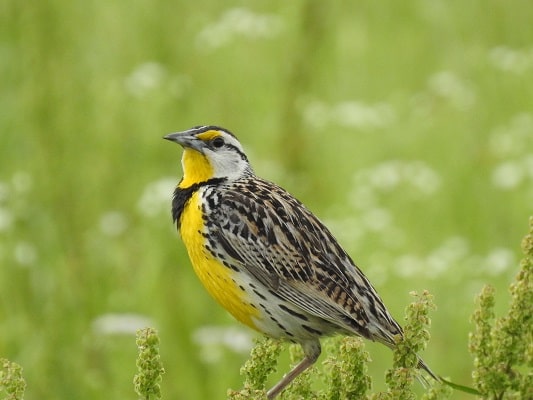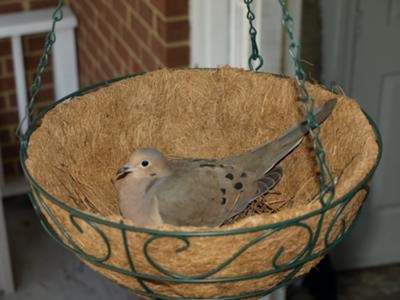Meadowlark: Which is it? - Eastern or Western
The Meadowlark is not a Lark but in the family of New World Blackbirds and Orioles.
The two North American Meadowlarks, the Eastern and Western, are so similar in appearance that even side by side, it's difficult to tell them apart.
The Eastern Meadowlark is primarily found in the eastern half of North America, from eastern Canada to the eastern United States, and as far west as the Great Plains.
Meanwhile, the Western Meadowlark is found in the western half of North America, from western Canada to the western United States, and as far east as the Great Plains.
However, there are areas where the ranges of the two species overlap, particularly in the Great Plains region of central North America.
In these areas, the Eastern Meadowlark and Western Meadowlark may be found in the same habitat and can sometimes be difficult to distinguish from each other.

The song of these two birds is the best or at least the easiest way to distinguish them from one another.
The Westerns song is louder and more musical, singing five to seven flute-like notes.
Western Meadowlark Call
The Easterns voice is clear and high-pitched, singing three to five notes.Eastern Meadowlark Call
Description
A rather stocky bird measuring 8 to 10 1/12 inches in length. The outer tail feathers are white, the breast is yellow with the familiar black V. The upper part is streaked.
The back is brown with black streaks, and the head is also brown with a black and yellow pattern on the face.
The chin and throat are yellow. The tail is also long and rounded with white outer tail feathers.
Courtship - Breeding Habits
Male Meadowlarks are known for their beautiful and complex songs, which they use to attract females and establish their territory.
Males may sing from a prominent perch, such as a fence post or tree branch, to advertise their presence to potential mates.
Other courtship behaviors include flight displays to attract females.
These displays involve flying upward in a series of quick, fluttering flights while singing, and then descending slowly with wings and tail spread to show off their plumage.
Nesting Habits
Males stake out and defend territories from other males for a few weeks before the females arrive on the chosen territory. Males may have 2 females.
Once a pair bond is established, the male and female Meadowlarks work together to build a nest.
The Meadowlarks nesting takes place on the ground with the male gathering grasses and other materials, while the female constructs the nest.
This behavior is often accompanied by courtship feeding, where the male brings food to the female to demonstrate his ability to provide for her and their young.
| Meadowlark Nesting Stats | |
|---|---|
| Eggs | 3 - 7 |
| Incubation | 13 - 15 days |
| Nestling Phase | 10- 12 days |
| Broods | 2 |
The nest is built in grassy fields or meadow. The nest is a domed cup of grass and stems and is well hidden.
The female lays 3 to 7 eggs that have a white base with completely spotted and speckled brown on top of the base color.
The female incubates the eggs for 13 to 15 days. The young leave the nest about 12 days after hatching. Young fledge before they can fly.
The young, instead of flying away when predators are around, will duck and sit still. Usually, 2 broods are raised each year. Builds a new nest for 2nd brood.
Feeding Habits
During the breeding season, insects such as spiders, grasshoppers, and others are eaten. During the non-breeding season, meadowlarks eat grains, and wild grass seeds.
Feeds entirely on the ground, sometimes probing beneath the surface to find insects. See below.
Interesting Notes
Meadowlarks have a complex bill musculature that allows them to force the bill open with considerable strength.
This allows them to insert the bill into the ground or grass tangle, then, opening their bill, they pry apart the substrate which allows them to get insects beneath the ground.
When the bird's bill opens the ground, the bird's eyes rotate forward slightly, allowing them to see directly between its jaws. This technique is referred to as "gaping".
Gaping allows these birds to retrieve insects that other bird species can't get. Starlings, along with other blackbirds, use the gaping technique to find food.





